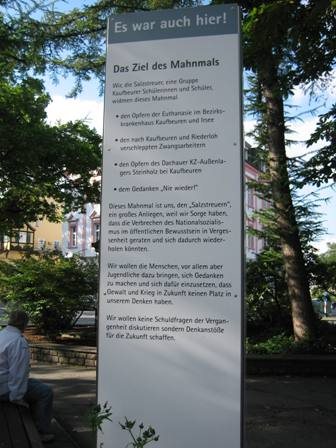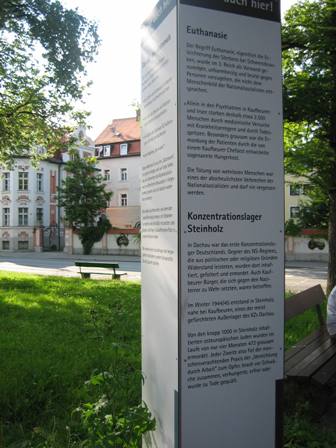Home
Kaufbeuren-Irsee (Kreis-, Heil- und Pflegeanstalt für Geisteskranke
Kaufbeuren-Irsee)
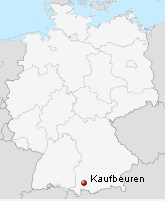
The Kinderfachabteilung in Kaufbeuren was established in December 1941 (as
the second of three in Bavaria) and was in operation until mid-April
1945 (and children were killed until June 1945). The clinic's medical
director was Dr. Valentin Faltlhauser, who was directly responsible for this
ward. The ward (an extension) in Irsee, which is close by, opened a few
months later. Its medical director was Dr. Lothar Gärtner,
the clinic's deputy director, who was directly responsible for the ward in
Irsee and committed suicide in 1945. Dr. Faltlhauser received
a sentence of 3 years for instigation to be an accessory to manslaughter and
was pardoned by the Bavarian secretary of justice in 1954. He died in 1961.
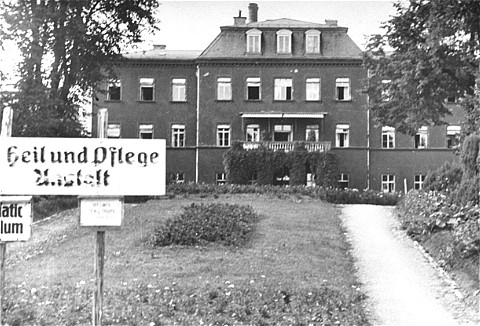 Source: U.S. Holocaust Memorial Museum
(http://www.ushmm.org/wlc/media_ph.php?lang=en&ModuleId=10005200&MediaId=3316)
Source: U.S. Holocaust Memorial Museum
(http://www.ushmm.org/wlc/media_ph.php?lang=en&ModuleId=10005200&MediaId=3316)
221 children died in the special children's ward in Kaufbeuren and Irsee.
Dr. Faltlhauser collaborated with another doctor in conducting
tuberculosis experiments on children in the Kinderfachabteilung, of whom the
majority died as a consequence.
Heuvelmann (2014: 58) notes that 400 person were deported from the Irsee
facility as part of the "T4" program, and 600 died during the war
thereafter. The first children were admitted in November 1940, and between
the end of 1945 to the end of 1945 108 minors died there.
Recent research (Steger 2006) has shown the role of the three Bavarian
"special children's wards" (Ansbach, Eglfing-Haar, and Kaufbeuren) as
suppliers of tissue specimens for the Neuropathological Research Institute
in Munich. With certainty Eglfing-Haar provided 144, and probably as many as
297, slide preparations of brain material from the “Special Pediatric Unit”
in Eglfing-Haar, whereas 23 came from Kaufbeuren and 25 from Ansbach.
Even though American troops entered Kaufbeuren in late 1945, the clinic site
was initially left undisturbed because of a putative occurrence of typhus
there. After military personnel entered the clinic, it was discovered that a
4-year old, Richard Jenne, had become the last victim of "children's
euthanasia" on May 29, 1945 (see for his picture provided by the
US Holocaust Memorial Museum here; and for the document that is part of the
extensive Nuremberg trial record available online here).
Kaufbeuren was probably known of having been one of the most notorious sites
of medicalized murder in Bavaria, as indicated in the Munich newspaper of 7
July 1945, which titled its story, printed on its cover, on Kaufbeuren "Mass
murder in the asylum" (Klee p. 452).
Kaufbeuren
In Kaufbeuren a recognition of the past murders did not begin until the
early 1980s. As late as 1976, when the Bezirk Schwaben published a volume on
the 100 year anniversary of the psychiatric clinic Kaufbeuren one of the
directors after WWII noted in an assessment of the era 1933-1945 that a
special children's ward existed after Dec. 1941 but did not mention the
murder of children. Dr. Faltlhauser was judged in the following way: "Seine
Arbeit war im Grund getragen von Liebe und Sorge um die Kranken" (Bezirk
Schwaben, p. 55; "His work was basically motivated by his love and care for
the sick") and "Die Entwicklung des Hauses verdankt ihm viel" (Bezirk
Schwaben, p. 55; "The progress of the clinic owes a lot to him"). Just two
years earlier, in 1974, the Catholic clergyman of the clinic had put up
a sign in the clinic chapel referring to the victims of "Euthanasia,"
but the sign disappeared quickly, likely by order of the clinic director.

Changes began to occur when in the wake of psychiatric reform in the 1970s
the new director Dr. Michael von Cranach and others confronted the
institution's Nazi past. In. the hallway of the administrative part of the
clinic Dr. Michael v. Cranach and a group of other physicians instigated the
placement of a text beneath a picture of Dr. Faltlhauser that details
his involvement in "euthanasia." The text ends with the note that "the
events in the [Nazi] past must always remind us how an ideology contemptuous
of human life can turn the actions of a physician into an instrument of
extermination."
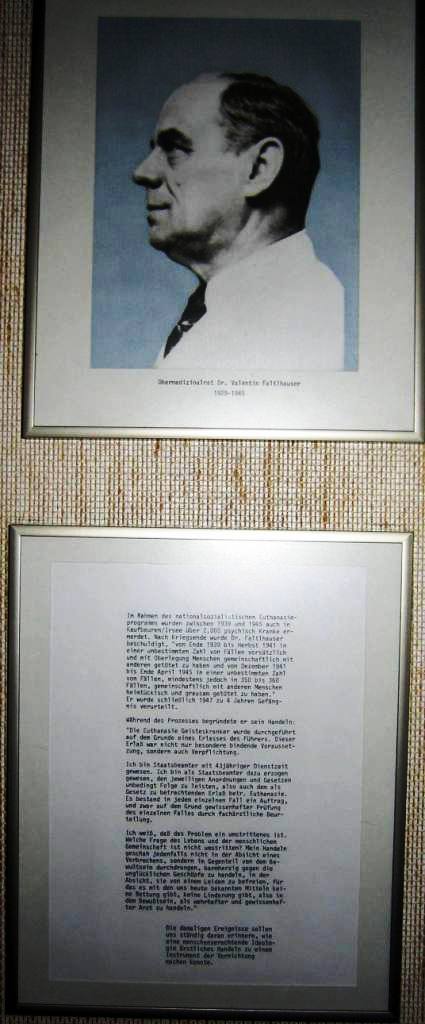 Source: Author.
Source: Author.
A boulder that has the inscription "In memory of the 2000 patients of the
hospital Kaufbeuren-Irsee who were murdered between 1940 and 1945 as victims
of [Hitler's] 'Euthanasia decree'" together with murdered patients' names
was placed on site. The massive stone is meant to signify the historical
burden of the "Euthanasia" crimes that rests on the clinic. Patients,
visitors, relatives of victims, and staff members leave little mementos such
as candles there.
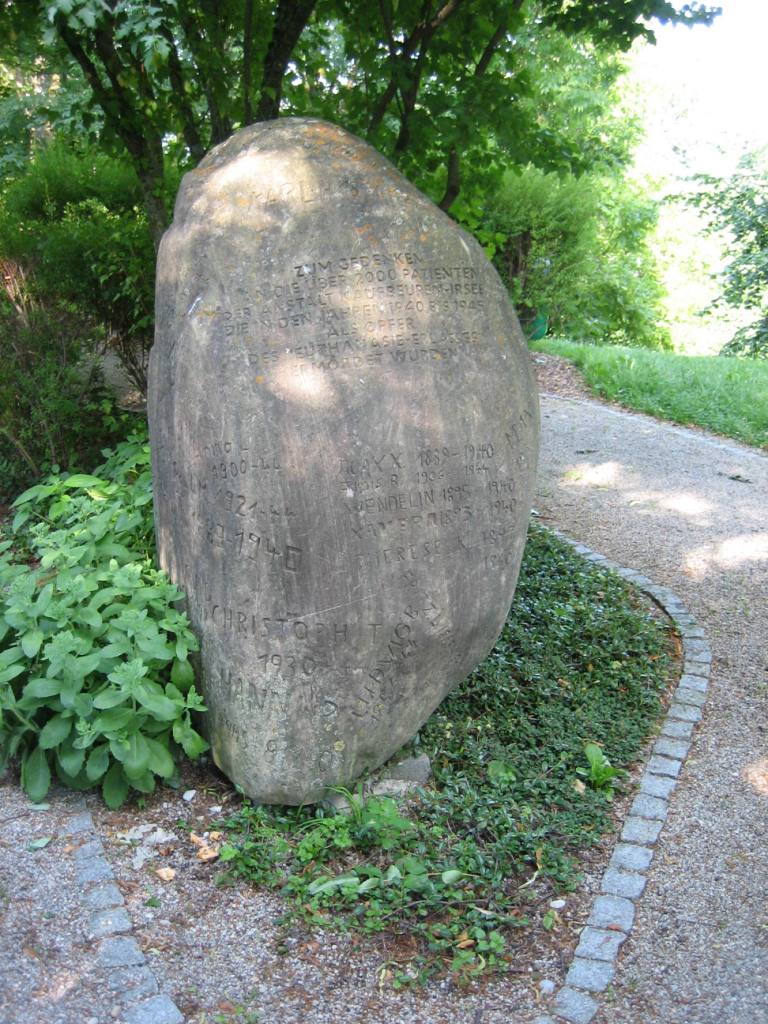 Source: Author.
Source: Author.
Source: Erwin Resch
The boulder is located at a place on clinic property that is frequented
by the public because it is located close to a spot that offers some of the
best views of the town Kaufbeuren. The memorial was conceived, financed, and
implemented by a group of physicians, psychologists, and nurses on the
occasion of the 50th anniversary in October 1989 of the beginning of the
"Euthanasia" program. Dr. v. Cranach headed a group of personnel,
particularly resident physicians, who sought to place a memorial on clinic
grounds. An annual commemoration takes place on January 27 in which
local community members, clinic staff, clergy as well as nursing
students participate. "Euthanasia" is a part of the nursing students'
curriculum, and it is also a topic that is addressed in advanced
professional training (berufliche Weiterbildung) there.
Dr. Michael v. Cranach, who has hosted and been part of commemorative
events since the early 1980s, has also conceived the exhibit "In memoriam"
(see in exhibits), which has as one of its foci the life and death of Ernst
Lossa, who was murdered at Kaufbeuren.
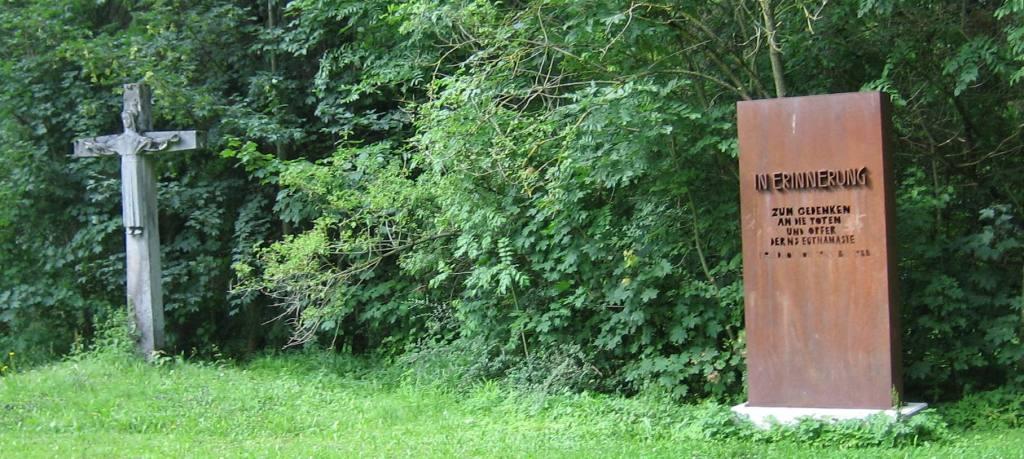 Source: Author.
Source: Author.
On site (at the former clinic cemetery) is also another memorial of the
Irsee artist Peter Müller since summer 2006. It is close to an older
memorial and has the inscription 'In commemoration of the dead and victims
of the NS-Euthanasia.' It is coated with a reddish patina may remind the
visitor of the impermanence of all that is material and ideological. The
stark cubic shape of the memorial itself is open to interpretation: does it
stand for the harsh ideology of National Socialism putting a stop to any
humane approach to illness and any resistance? Or is its shape intended to
remind the visitor of the shape of the chimney of the crematorium that was
erected in 1944 on site to burn the victims? - Given its rather remote
location, the memorial presently does not seem to engender active
commemoration.
Irsee
In Irsee the historical chronicle of the cloister published in 1981
made no mention of the involvement of the institution in the Nazi euthanasia
project. However, in that year a bronze sculpture by Martin Wank was
erected on the grounds of the former clinic cemetery (where the victims
were believed to have been buried, although more recent research shows the
burial grounds to have been farther from the cloister). It was the first to
commemorate the "euthanasia" victims at a site of a former
Kinderfachabteilung in West Germany, and the second overall (after
Kocborowo). It was commissioned by the district Schwaben in the context of
the renovation of the Kloster Irsee and its re-dedication as a conference
and education center. A small panel on the display reads "let me sing your
passion" (a reference to the title of a ecclesiastical hymn, by Johann
Michael Denis). As reported by the institution's priest, patients sang
this song when they knew that they marked for death and were to die (Römer,
p. 143). A plate is attached, with the text "In commemoration of the silent
victims of political dictatorship." The memorial employs a somewhat effusive
symbolism, explained in the booklet 'Memento for the euthanasia victims
of Irsee': the lowest level of the memorial depicts a quagmire of guilt (and
perhaps desperation, depicted by extending limbs) that holds on firm to the
tree of death bearing the world as its fruit. On top of it is the Redeemer,
who turns the world in his resurrection into the cradle of good.
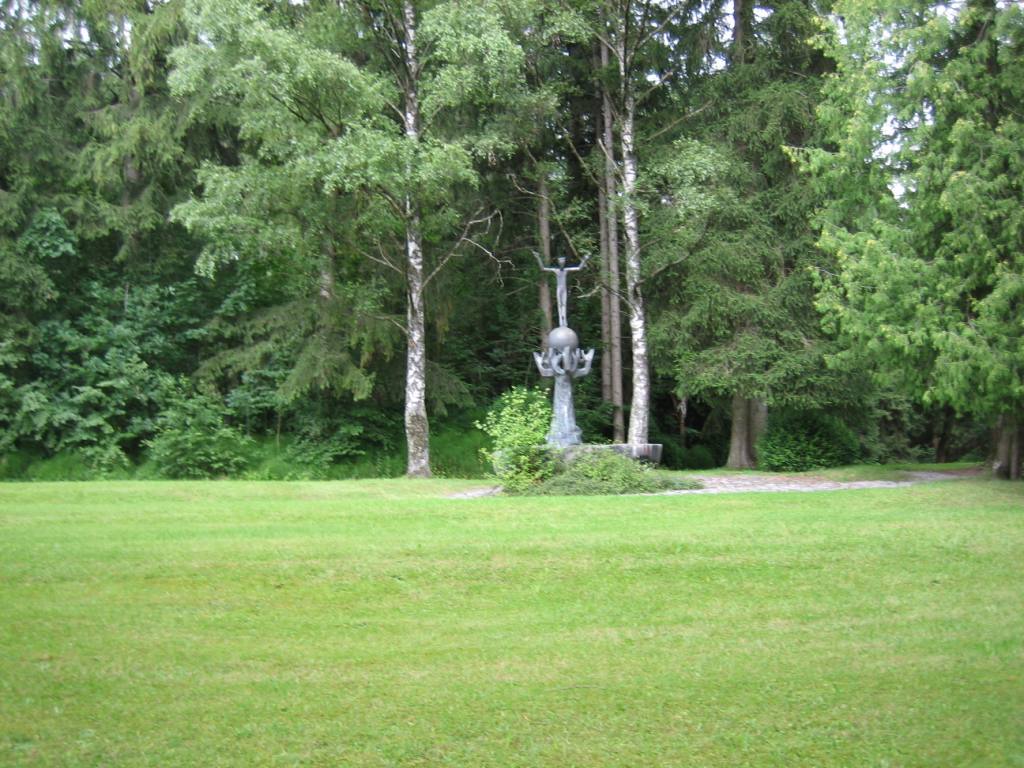 Source: Author.
Source: Author.
A display at the memorial addresses the historical
events as well; its text is stated in the history section of the
cloister's webpage (see the following). Before the plaque was installed, a
sign directing visitors to the memorial had copies of the "Memento"
attached to it.
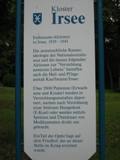 Source: Author.
Source: Author.
The history part of the website of
the Kloster Irsee (where Irsee's part of the special children's
ward was housed), now called the "Swabian Conference and Educational Center
Cloister Irsee" is explicit about its past: "1939-1945: The inhuman racial
ideology of the National Socialists and the resulting activities for the
'extermination of worthless life' also affect Irsee: More than 2000 patients
[adults and children] from Kaufbeuren/Irsee are deported to extermination
facilities, die upon the provision of a fat free starvation diet [E-diet] or
are directly killed as a result of injections and overdoses of medications."
Parts of this text are also mentioned in the overview of the clinic's
history in the hallways of the cloister.
Most recently, the former pathology (Prosektur) of the Irrenanstalt has been
reopened as a memorial. A plaque at the entrance of the building reads:
"Cloister Irsee. Memorial. By having a memorial on the former cemetery
grounds, a memorial room in the facility of the then pathology, and [three]
stumbling blocks at the front of the cloister the Swabian Educational Center
Irsee commemorates the murder of the patients by Nazi "euthanasia" in the
facility Kaufbeuren/Irsee. Let the fate of the victims be a warning to us:
The dignity and the life of the sick, the marginalized in society, and those
who need assistance deserve particular protection!"
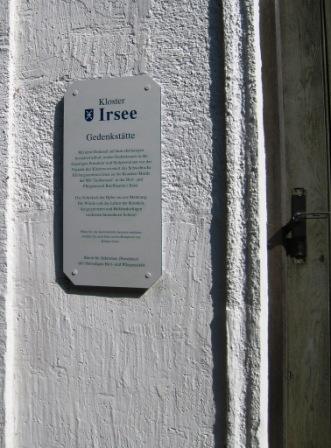 Source: Author.
Source: Author.
The memorial contains the dissection table that has been in place since the
end of WWI (a copy of it was made for the exhibit on euthanasia in the
Imperial War Museum). The anteroom contains an art installation by Beate
Passow (1996), a triptych originally entitled "...most courteously I wish to
ask thay you answer the following questions..." (a request made by Dr.
Hensel, carrying out deadly tuberculosis experiments on children of the
Kinderfachabteilung) with three pictures, each depicting a child, which are
also included in Dr. v. Cranach's exhibit "In Memoriam" (see exhibits).
Source: Author.
At the cemetery there is a plaque in a small chapel. It was restored in 2006
and to the existing text, which read "Commemorate in prayer the men and
women of the clinic Irsee, who found their final resting place here and
await eternal resurrection," the following text was added: "In memory of the
victims of the NS-Euthanasia-Actions of 1941-45 who rest here."
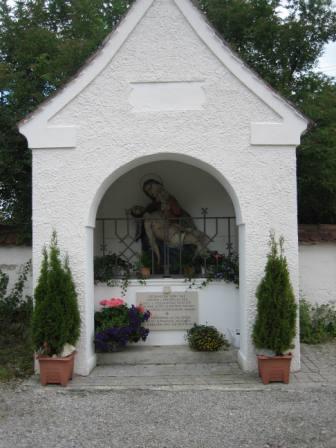 Source: Author.
Source: Author.
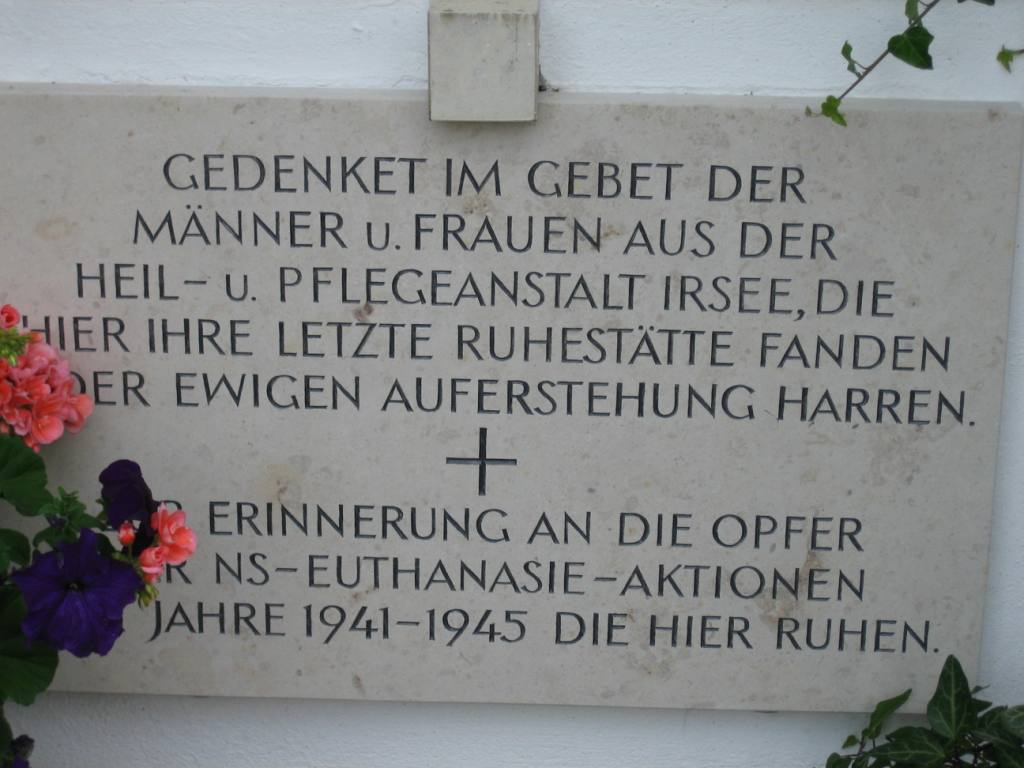 Source: Author.
Source: Author.
There is a stela by the sculptor Alfred Neumann close to the former
pestilence cemetery (Seuchenfriedhof) of the clinic established in 2005,
which has the following inscription: 'In commemoration of 47 dead persons of
the NS-Euthanasia actions who fell victim to a typhus epidemic in spring
1944.' It was erected at the end of 2005 based on a resolution of the city
council. Its 47 small squares relate to the number of the victims.
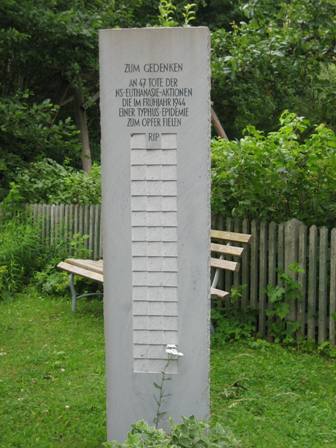 Source:
Author.
Source:
Author.
 Source:
http://www.kloster-irsee.de/deutsch/kloster_irsee/pressearchiv1.php?p=537
Source:
http://www.kloster-irsee.de/deutsch/kloster_irsee/pressearchiv1.php?p=537
In 2009, stumbling blocks (Stolpersteine) for three victims of "euthanasia"
were placed at the cloister Irsee.
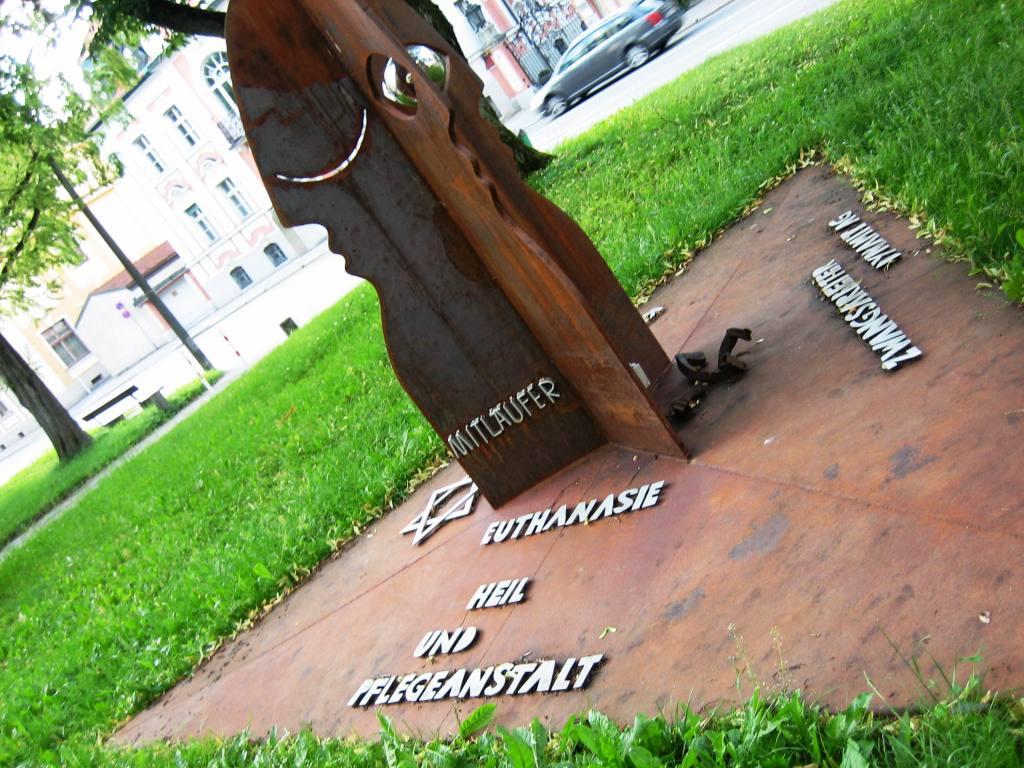 Source: C. Kaelber.
Source: C. Kaelber.
In addition, a youth group, "Die Salzstreuer' (Saltshakers), have advocated
for the erection of a centrally located memorial for victims of National
Socialism in Kaufbeuren. "Euthanasia" as a word is inscribed in the
memorial, which was created by the artist Peter Müller and dedicated on 9
November 2008, the 70th anniversary of the Kristallnacht.
A text display explains the context.
Source: C. Kaelber
The group also has put together an exhibit, "Es war auch hier: Kaufbeurer
Schicksale im Dritten Reich" (It happened here too: The Fate of Kaufbeuren
Residents in the Third Reich), which includes a section on children's
"euthanasia (here). The group has a website with further information.

Source: Allgäuer Zeitung (3 November 2010, p. 24)
On 1 November 2010, the author Robert Domes organized a display of 500
candles at the former cemetery at Irsee on All Saints' Day (see also: http://www.youtube.com/watch?v=Yitu5mTd49k). This
events has since been repeated.
A film about Ernst Lossa, one of the victims, has been reported to be
planned. The student Sina Moshehi received the Bertini prize for his
documentary "Zum Andenken: Vom Leben und Sterben des Ernst Lossa" (In
memory: Life and Death of Ernst Lossa) (http://www.youtube.com/watch?v=dhuHbm9mvZw).
The reopened city museum of Kaufbeuren addresses "euthanasia" via
electronic media in its facility.
A section entitled "A situation at the Freiburg public youth office"
(Heidtke/Rössler 1995, pp. 335-39) describes the (rather remarkable) refusal
of four young students of the Catholic Social Women's Office (Soziale
Frauenschule) in Freiburg who interned at the public youth office to ready
disabled children for transport to the special children's ward Kaufbeuren
and accompany them in 1944 because it was an open secret that Kaufbeuren was
an "extermination center."
In 2014, a stumbling block was placed in Ludwigsburg in memory of the
victim Anita Henk, and a web
page as well as a youtube
video provides information about her fate.
The victim Rolf Mühlhahn is commemorated here.
Digital reproductions of records of the Grafeneck trial relate to a number
of children from Wurttemberg and Baden who died in the Kaufbeuren facility
between 1941 and 1945 (http://www.landesarchiv-bw.de/plink/?f=6-902860;
).
Literature
Benzenhöfer, Udo. 2003. "Genese und Struktur der
'NS-Kinder- und Jugendlicheneuthanasie.'" Monatsschrift
für Kinderheilkunde 151: 1012-1019.
Bezirk Schwaben. 1976. Hundert Jahre
Nervenkrankenhaus Kaufbeuren. Kaufbeuren: n.p.
Cranach, Michael von. 1987. "Die Psychiatrie in der Zeit des
Nationalsozialismus." In Verband der Bayerischen Bezirke, 150
Jahre Psychiatrie in Bayern (broschure).
———. 2008. "Geschichte des Nervenkrankenhauses Irsee." Lecture at
the conference "60 Jahre Allgemeine Erklärung der Menschenrechte: Das Recht
auf Gesundheit in Deutschland," Irsee. Available on youtube (here).
Domes, Robert. 2008. Nebel
im August: Die Lebensgeschichte des Ernst Lossa. Munich: cbt.
Frei, Hans, ed. 1981. Das Reichsstift
Irsee: Vom Benediktinerkloster zum Bildungszentrum. Weissenhorn:
Anton H. Konrad Verlag.
Heidtke, Birgit, and Christina Rössler. 1995. Margarethas
Töchter: Stadtgeschichte der Frauen von 1800 bis 1950 am Beispiel
Freiburgs. Freiburg: Kore.
Heuvelmann, Magdalene. 2013. "Wer in
einer Gottesferne lebt, ist im Stande, jeden Kranken wegzuräumen":
"Geistliche Quellen" zu den NS-Krankenmorden in der Heil- und
Pflegeanstalt Irsee. Irsee: Grizeto.
--------. 2014. "'Wer in einer Gottesferne lebt, ist im Stande,
jeden Kranken wegzuräumen': Geistliche Quellen zu den NS-Krankenmorden in
der Heil- und Pflegeanstalt Irsee." Pp. 52-70 in Die
"Euthanasie"-Opfer zwischen Stigmatisierung und Anerkennung: Forschungs-
und Ausstellungsprojekte zu den Verbrechen an psychisch Kranken und die
Frage der Namensnennung der Münchner "Euthanasie"-Opfer, edited
by Gerrit Hohendorf, Stefan Raueiser, Michael von Cranach, and Sibylle von
Tiedemann. Munster: Kontur.
Klee, Ernst. 1995. "Euthanasie" im
NS-Staat. Frankfurt: Fischer.
Mader, Ernst T. 1985 (first ed. 1982). Das
erzwungene
Sterben von Patienten der Heil- und Pflegeanstalt Kaufbeuren-Irsee
zwischen 1940 und 1945 nach Dokumenten und Berichten von Augenzeugen.
Blöcktach: Verlag an der Säge.
Nießeler, Uli. 1984. "Vernichtungszentrum Kaufbeuren-Irsee." Türspalt
(10).
Ost, Suzanne. 2006. "Doctors and Nurses of Death: A Case Study of
Eugenically Motivated Killing under the Nazi `Euthanasia' Programme." Liverpool Law Review 27: 5-30.
Pötzl, Ulrich. 1995. Sozialpsychiatrie,
Erbbiologie und Lebensvernichtung: Valentin Faltlhauser, Direktor der
Heil- und Pflegeanstalt Kaufbeuren-Irrsee in der Zeit des
Nationalsozialismus. Husum: Matthiesen.
Raueiser, Stefan, and Bertram Sellner, eds. 2009. "...man
stolpert mit dem Kopf und mit dem Herzen": Zum Gedenken an die Opfer der
Heil- und Pflegeanstalt Kaufbeuren/Irsee. Irsee: Grizeto Verlag.
Resch, Erich. 2006. "Die Begräbnisstätten der Heil- und Pflegeanstalten bzw.
des Bezirkskrankenhauses Kaufbeuren und Irsee." Kaufbeurer
Geschichtsblätter: Mitteilungsblatt des Heimatvereins Kaufbeuren e.V.
17, 8: 258-78.
Römer, Gernot. 1986. Die grauen Busse in
Schwaben: Wie das Dritte Reich mit Geisteskranken und Schwangeren umging:
Berichte, Dokumente, Zahlen und Bilder. Augsburg: Presse-Druck- und
Verlags-GmbH Augsburg.
Schmidt, Martin, Robert Kuhlmann, and Michael von Cranach. 1999. "Heil- und
Pflegeanstalt Kaufbeuren." Pp. 265-325 in Psychiatrie
im Nationalsozialismus: Die Bayerischen Heil- und Pflegeanstalten zwischen
1933 und 1945, edited by M. von Cranach and H.-L. Siemen. Munich:
R. Oldenbourg Verlag.
Schweizer-Martinschek, Petra. 2004. "Die Versuche an behinderten Kindern in
der Heil- und Pflegeanstalt Kaufbeuren-Irsee 1942-1944." Pp. 231-59 in Nationalsozialismus in Bayerisch-Schwaben:
Herrschaft, Verwaltung, Kultur, edited by Andreas Wirsching.
Ostfildern: Jan Thorbecke.
———. 2008. "NS-Medizinversuche: 'Nicht gerade körperlich besonders wertvolle
Kinder.'" Deutsches Ärzteblatt
105(26): A-1445.
Steger, Florian. 2002. "Medizinische Forschung an Kindern zur Zeit des
Nationalsozialismus: Die 'Kinderfachabteilung' der Heil- und Pflegeanstalt
Kaufbeuren-Irsee." Medizin, Gesellschaft
und Geschichte 22: 61-88.
———. 2004. "'Ich habe alles nur aus absolutem Mitleid getan':
'Kinderfachabteilung' der Heil- und Pflegeanstalt Kaufbeuren-Irsee:
'Kindereuthanasie'." Monatsschrift
Kinderheilkunde 152(9): 1004-10.
———. 2005. "Kinder als Patienten der Heil- und Pflegeanstalt
Kaufbeuren-Irsee: Die 'Kinderfachabteilung' in den Jahren 1941-1945." Sudhoffs Archiv 89(2): 129-50.
———. 2006. "Neuropathological research at the 'Deutsche Forschungsanstalt
für Psychiatrie' (German Institute for Psychiatric Research) in Munich
(Kaiser-Wilhelm-Institute): Scientific utilization of children's organs from
the 'Kinderfachabteilungen' (Children's Special Departments) at Bavarian
State Hospitals." Journal of the History
of the Neurosciences 15: 173-85.
Topp, Sascha. 2004. “Der ‘Reichsausschuss zur
wissenschaftlichen Erfassung erb- und anlagebedingter schwerer Leiden’:
Zur Organisation der Ermordung minderjähriger Kranker im
Nationalsozialismus 1939-1945.” Pp. 17-54 in Kinder in der
NS-Psychiatrie, edited by Thomas Beddies and Kristina Hübener.
Berlin-Brandenburg: Be.bra Wissenschaft.
———. 2005. "Der 'Reichsausschuß zur wissenschaftlichen
Erfassung erb- und anlagebedingter schwerer Leiden': Die Ermordung
minderjähriger Kranker im Nationalsozialismus 1939-1945." Master's Thesis
in History, University of Berlin.
Concerning "Euthanasia" trial(s)
for this location
Bauer, Fritz et al., eds. 1968-1981. Justiz
und NS-Verbrechen: Sammlung deutscher Strafurteile wegen
nationalsozialistischer Tötungsverbrechen, 1945-1966. Amsterdam:
University Press Amsterdam. Vol. 5, pp. 175ff.
Bryant, Michael S. 2005. Confronting the
"Good Death": Nazi Euthanasia on Trial, 1945-1953. Boulder:
University of Colorado Press. Pp. 192-98.
Freudiger, Kerstin. 2002. Die juristische
Aufarbeitung von NS-Verbrechen. Tübingen: Mohr Siebeck. Pp. 272-78.
last updated on 13 September 2015
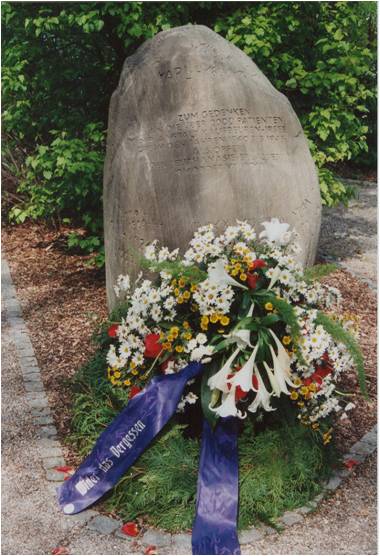
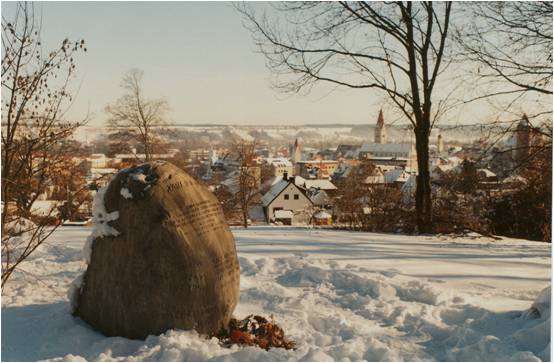
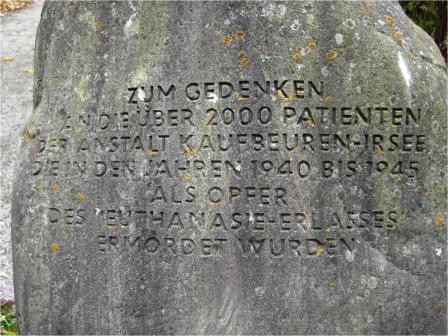

 Source: U.S. Holocaust Memorial Museum
(http://www.ushmm.org/wlc/media_ph.php?lang=en&ModuleId=10005200&MediaId=3316)
Source: U.S. Holocaust Memorial Museum
(http://www.ushmm.org/wlc/media_ph.php?lang=en&ModuleId=10005200&MediaId=3316)
 Source: Author.
Source: Author. Source: Author.
Source: Author.


 Source: Author.
Source: Author. Source: Author.
Source: Author. Source: Author.
Source: Author. Source: Author.
Source: Author.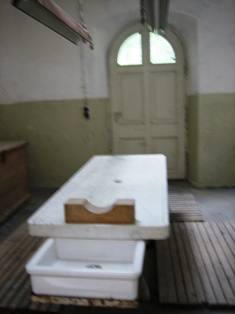
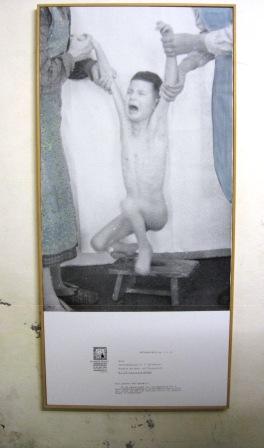
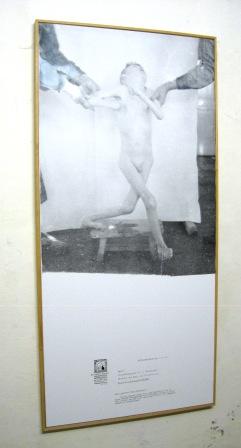
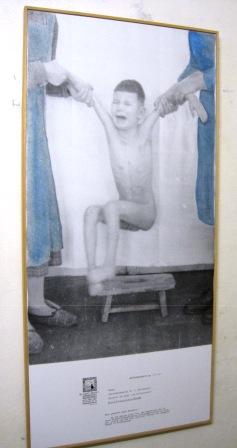
 Source: Author.
Source: Author. Source: Author.
Source: Author. Source:
Author.
Source:
Author. Source:
http://www.kloster-irsee.de/deutsch/kloster_irsee/pressearchiv1.php?p=537
Source:
http://www.kloster-irsee.de/deutsch/kloster_irsee/pressearchiv1.php?p=537 Source: C. Kaelber.
Source: C. Kaelber.